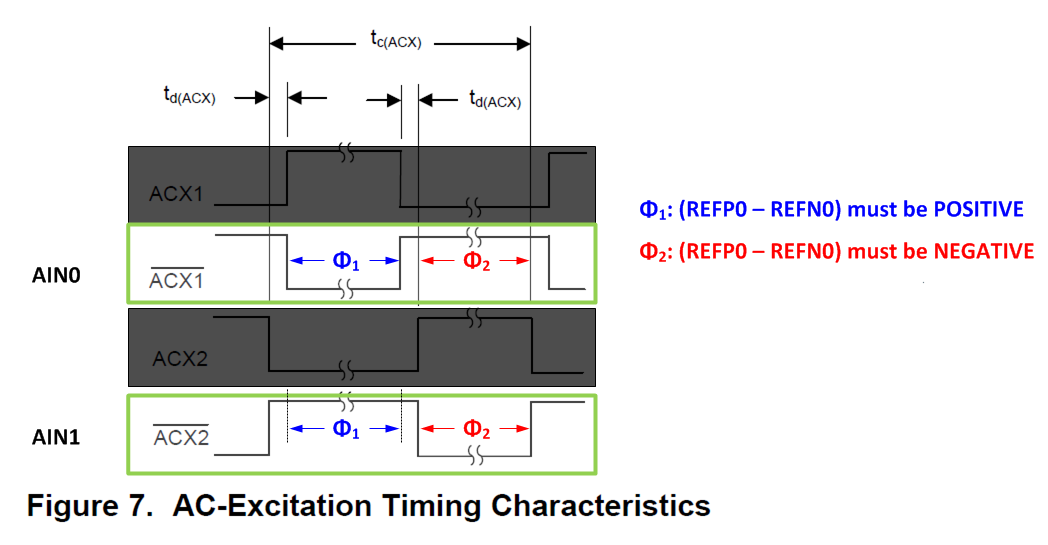Hello. I have some questions about ADS1235.
I want to use 2-wire mode AC-excitation. In this mode use PINs: AIN0 and AIN1 (or GPIO0 and GPIO1, or inverse ACX1 and ACX2). I want to understand the momentary status of the outputs (inverse ACX1 and ACX2) during one conversion phase (the voltage polarity is normal) and for the alternate conversion phase (the voltage polarity is reversed).
phase 1 (1 conversion): inverse ACX1=high, inverse ACX2=low;
phase 2 (2 conversion): inverse ACX1=low, inverse ACX2=high
or
phase 1 (1 conversion): inverse ACX1=low, inverse ACX2=low;
phase 2 (2 conversion): inverse ACX1=high, inverse ACX2=high
???
Or do I manage the state of the inverse ACX1 and ACX2 outputs by writing to the registers?
How to control the outputs of the ACX pins (ADS1235 or external MCU by writing to the registers of ADS1235)?


